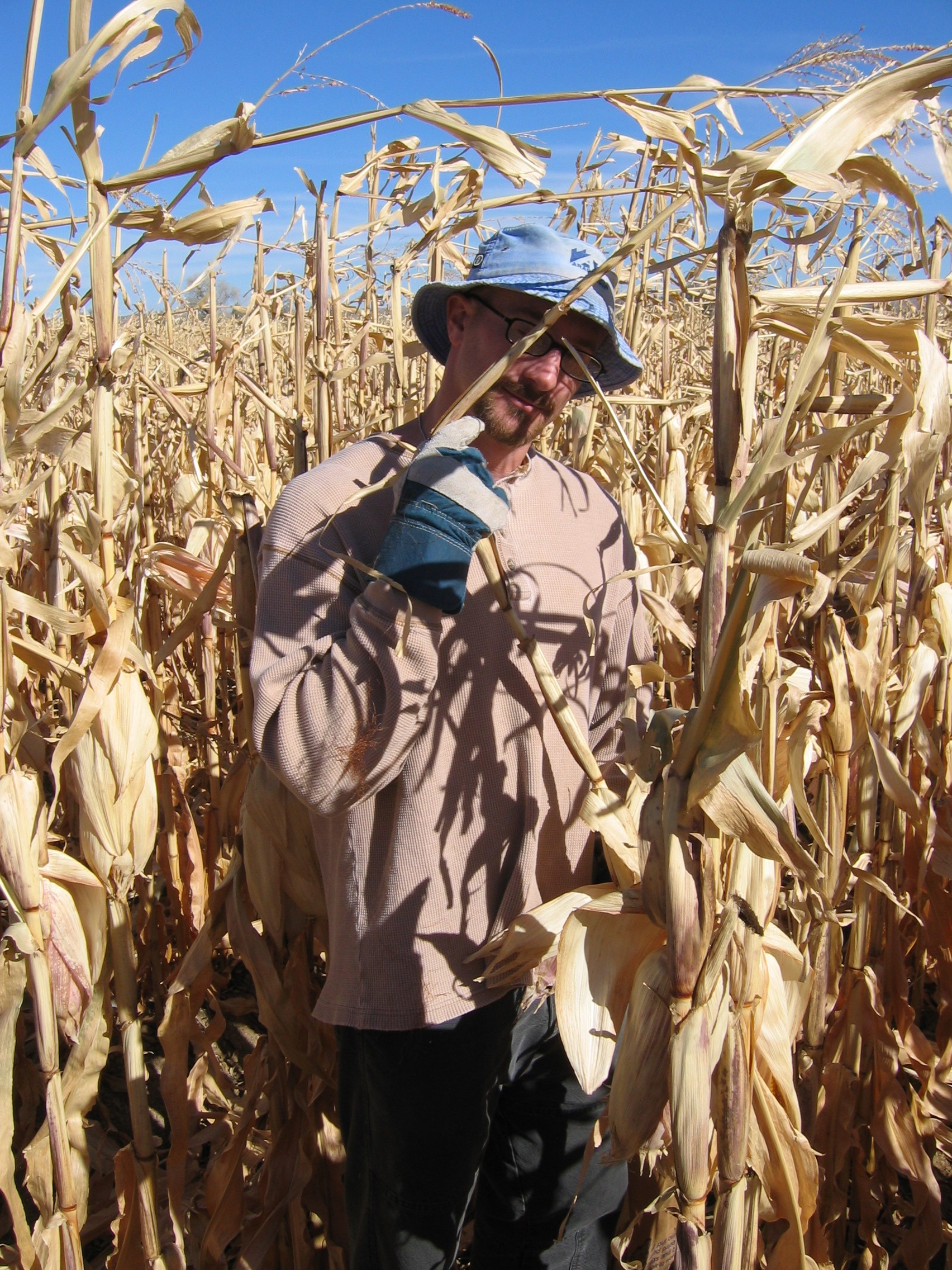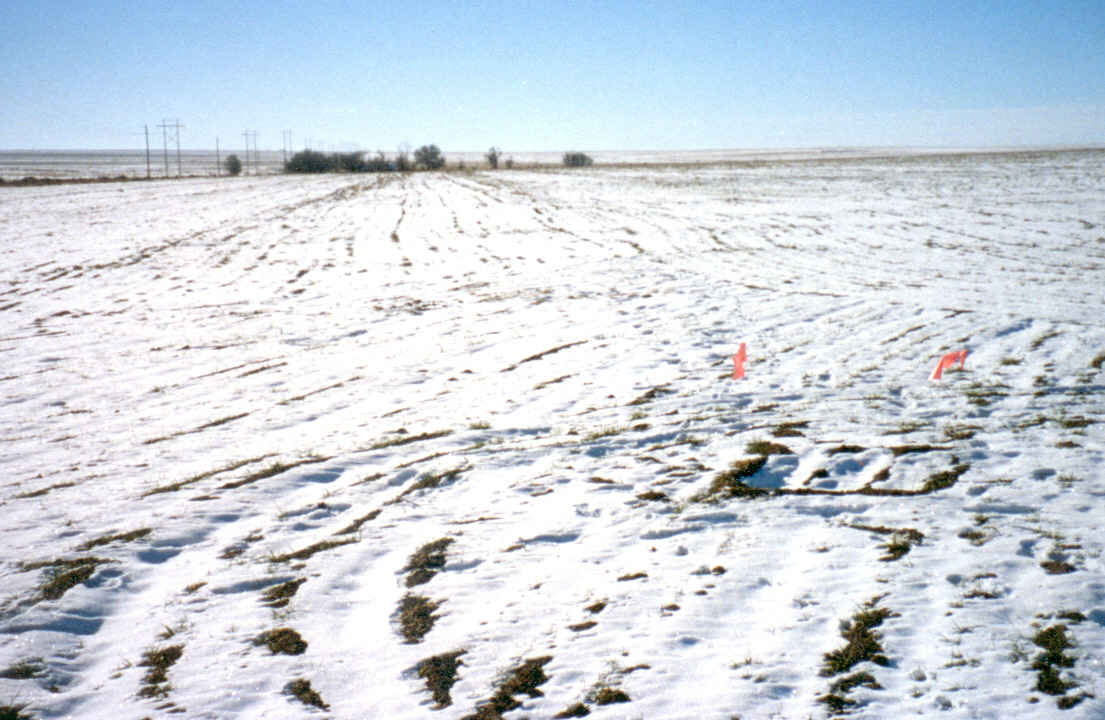 |
| Home Research SEGS CV Courses Kids Do Ecology Photos |
Research Overview
I examine population dynamics within pest-crop agroecosystems including the potential effects of climate change. Additionally, I create experimental games to quantify the decision making processes in various environmental arenas. To address these systems, I synthesize information derived from field data, experimental gaming data using a variety of quantitative techniques including data simulation, population modeling, spatiotemporal forecast modeling and landscape ecology. An important goal of my work is the creation of applicable and predictive models to reduce the negative impacts on ecosystems. For example, crop management typically specifies within-field cultivation using uniform seed density, plant age, and a single genetic crop variety. Additionally, soil conditions, weeds and insect populations are managed. Thus, from a reductionist point of view, system complexity is greatly reduced. Moreover, questions answered within agroecosystems frequently have management implications, providing an avenue for both scientific ingenuity and outreach. Therefore, my approach is to use theoretical modeling combined with field and laboratory experimentation to provide a framework for studying agroecosystems. My research has concentrated primarily on a few ecological or social-ecological questions:
1. How will climate change influence the habitat, phenology and seasonality of plants and arthropods
2.
Can we quantify
pest-crop agroecosystem dynamics using spatiotemporal
models and rate functions for important arthropod
species
3. Can we
use social-ecological theory to understand and nudge
human behavior to improve system resilience
I develop models that help inform Integrated Pest Management systems, reduce the spread of disease in our hoofstock industries, and improve water quality in the Lake Champlain watershed. While I have enjoyed applying my modeling skills in arthropod-crop agroecosystems, I am enthusiastic collaboration that incorporates my interests in spatial and quantitative population modeling.
Past Research Projects
Quantifying how climate change will influence
the phenology, habitat and seasonality  of important
arthropod pests and their host plants
of important
arthropod pests and their host plants
How will climate
change affect our food security? Although many of the
effects of climate change on agriculture have been
postulated, spatiotemporal prediction models have not
been forthcoming. Agricultural management requires a
well-informed strategy for controlling pests.
Prediction models that quantify arthropod pest
dynamics are key components for developing
agricultural management strategy and, because of their
ectothermic nature, the arthropod population dynamics
are is tightly linked to climatic variables. Thus,
prediction models frequently use climate variables as
drivers. Currently, I am developing spatiotemporal
models to describe how existing climate data can be
extended to quantify the effects of climate change on
pest dynamics. This method explicitly incorporates
daily temperature variation, without which substantial
error propagation in phenological modeling will occur.
To illustrate this method, it was applied to examine
the phenology of the Sunflower stem weevil (Merrill
and Peairs In Prep), which produced an unexpected but
exciting result. Specifically, climate change
simulations changed the duration of the sunflower
crop’s at-risk window for weevil oviposition, with
some areas observing a shorter at-risk time window
while others experience a longer at-risk window. This
counter-intuitive result serves to emphasize the need
for increased research on the effects of climate
change on important ecosystems. Knowledge such as
produced by Sunflower stem weevil modeling can help
crop managers or ecosystem stakeholders predict and
respond to climate change.
Ongoing modeling efforts will depict likely shifts in habitat quality for the Russian wheat aphid by incorporating knowledge of aphid biology and alternate plant hosts. For example, the Russian wheat aphid feeds exclusively on plants utilizing the C3 photosynthetic pathway. Can we predict likely changes to the habitat quality of the Russian wheat aphid by examining postulated climate change effects on the habitat of C3 grass species (Collatz et al. 1998)? Moreover, a warmer climate may increase the aphid’s daily intrinsic rate of increase. Will changes to our climate result in higher aphid incidence, and more economically damaging infestations?
Russian wheat aphid outbreak prediction models developed for use throughout the
Quantitative knowledge of pest population dynamics and eco-physiological factors are essential for the development and implementation of quality integrated pest management. One of the principle pests of wheat across the
 Validating a spatially-explicit
precision forecasting model for Russian wheat aphid
densities on small grain crops in
Validating a spatially-explicit
precision forecasting model for Russian wheat aphid
densities on small grain crops in
Russian
wheat aphid (RWA), Diuraphis noxia (Kurdjumov) is a pest of wheat and barley.
Damage estimates are in the hundreds of millions of
dollars since its introduction into the
While most crops
are still managed as if they were homogeneous units,
this strategy ignores within-field heterogeneous
characteristics that could be used to reduce costs.
Precision agriculture utilizes heterogeneity in the
landscape (e.g., differing soil characteristics) to
target tactics such as variable seeding and
fertilization rates. An under-utilized aspect of
precision agriculture is precision pest management,
which targets control tactics to within-crop sites to
reduce economic pest damage. Determining which
variables influence pest distributions is a key
element in the development of precision pest
management strategy. That is, by understanding the
factors influencing a pest’s spatial distribution, we
may be able to target management efforts to
spatially-explicit zones or sites to prevent or reduce
pest damages. This study was conducted to generate an
understanding of spatial variability of Western bean
cutworm, Striacosta
albicosta
(Smith). Using augmented, grid-based sampling, S. albicosta moths were collected in
pheromone traps at 371 locations in 1997 and 359
locations in 1998 in two center pivot-irrigated corn
fields near Wiggins,
Spatial
variability
of European corn rootworm pheromone trap captures in
sprinkler irrigated corn in
Field corn, Zea mays L., is one of the most
economically important crops throughout the
Referenced Above
Collatz, G. J.,
J. A. Berry, and J. S. Clark. 1998. Effects of climate and atmospheric CO2
partial pressure on the global distribution of C-4
grasses: present, past, and future. Oecologia 114:
441-454.
Kerzicnik, L. M.,
F. B. Peairs, J. D. Harwood, and S. C. Merrill. In
prep. Spiders in diverse
cropping systems.
Merrill, S. C.,
and F. B. Peairs. Submitted. Climate change will influence the timing of
pest attacks. Nature Climate Change
Merrill, S. C.,
T. O. Holtzer, and F. B. Peairs. 2009a. Diuraphis noxia
reproduction and development with a comparison of
intrinsic rates of increase to other important small
grain aphids: a meta-analysis. Environmental
Entomology 38: 1061-1068.
Merrill, S. C.,
T. O. Holtzer, and F. B. Peairs. Accepted. Examining Spatial Correlation Between Fall
and Spring Population Densities of the Russian Wheat
Aphid (Hemiptera: Aphididae). Colorado State
University Agricultural Experiment Station Technical
Report.
Merrill, S. C.,
T. L. Randolph, C. B. Walker, and F. B. Peairs.
2008. 2007 Russian wheat
aphid biotype survey results for Colorado, pp. 43-44.
In J. J. Johnson [ed.], Making better
decisions: 2007 Colorado wheat variety performance
trials. Colorado State Univ. Agric. Exp. Sta. Tech.
Rep. TR08-08. Colorado State University, Fort Collins,
CO.
Merrill, S. C.,
T. O. Holtzer, F. B. Peairs, and P. J. Lester.
2009b. Modeling spatial
variation of Russian wheat aphid overwintering
population densities in Colorado winter wheat. Journal
of Economic Entomology 102: 533-541.
Merrill, S. C.,
A. Gebre-Amlak, J. S. Armstrong, and F. B. Peairs.
2010. Nonlinear degree-day
models of the Sunflower stem weevil (Curculionidae:
Coleoptera) Journal of Economic Entomology 103:
303-307.
Merrill, S. C.,
S. M. Walter, F. B. Peairs, and J. A. Hoeting.
Submitted-a. Spatial
Variability of Western Bean Cutworm Populations in
Irrigated Corn. Environmental Entomology.
Merrill, S. C.,
T. O. Holtzer, F. B. Peairs, and P. J. Lester.
Submitted-b. Prediction of
Spatially Explicit Russian Wheat Aphid Densities in
Winter Wheat Agroecosystems. Journal of Economic
Entomology.
Randolph, T. L.,
S. C. Merrill, and F. B. Peairs. 2008. Reproductive rates of Russian wheat aphid
(Hemiptera : Aphididae) biotypes 1 and 2 on a
susceptible and a resistant wheat at three temperature
regimes. Journal of Economic Entomology 101: 955-958.